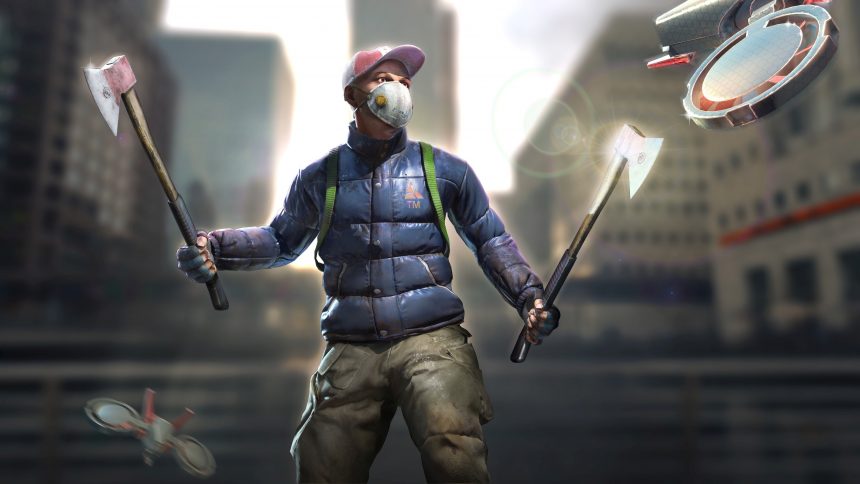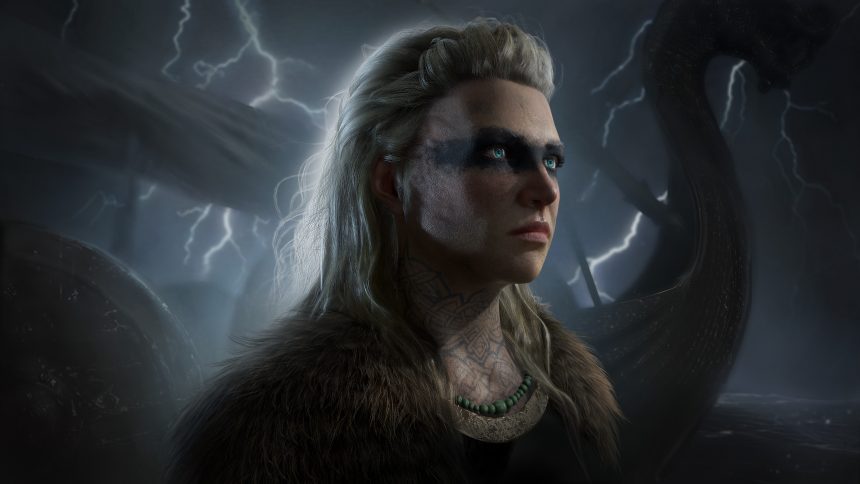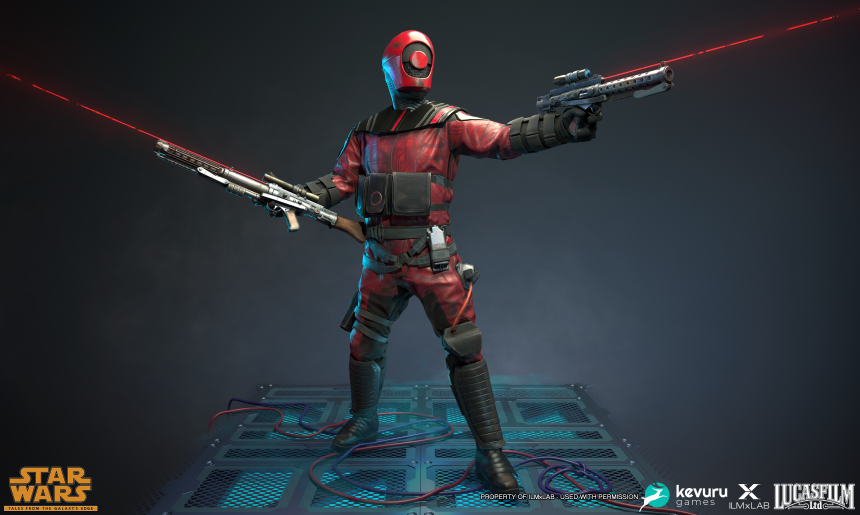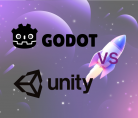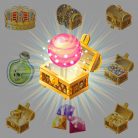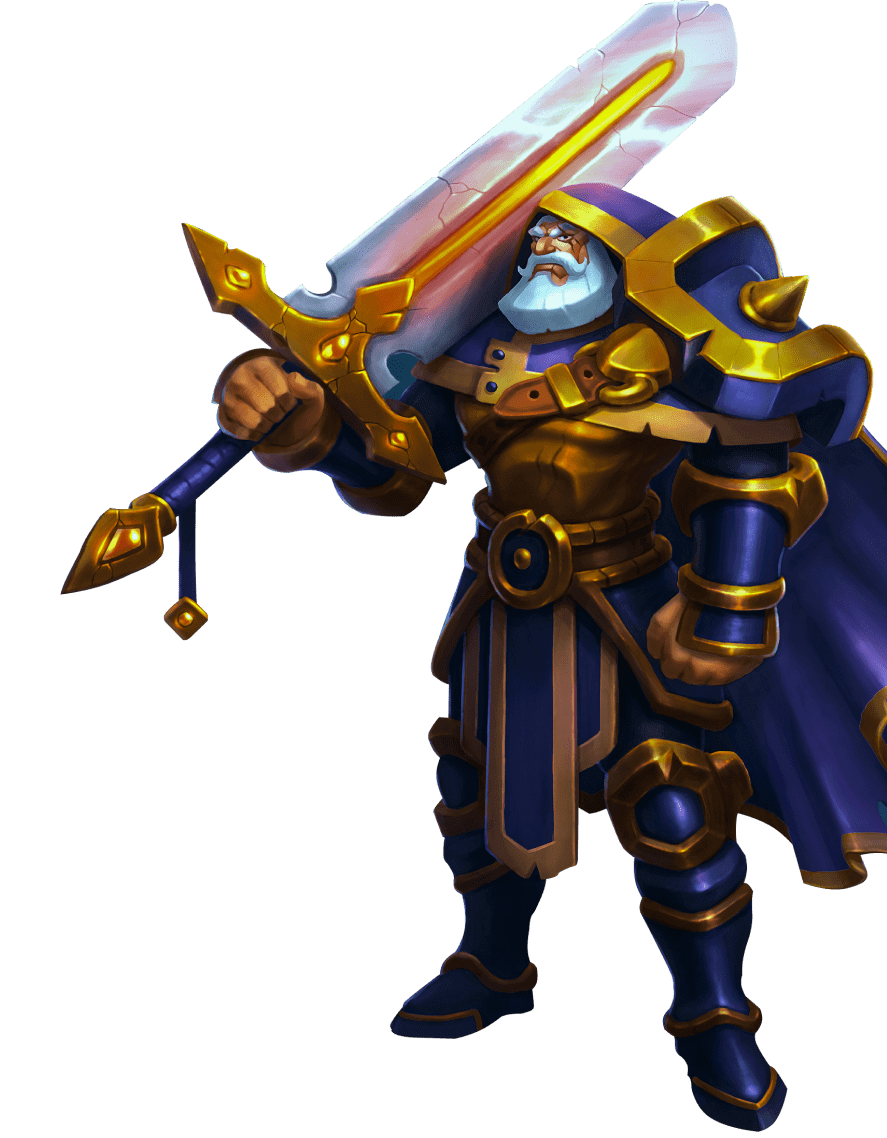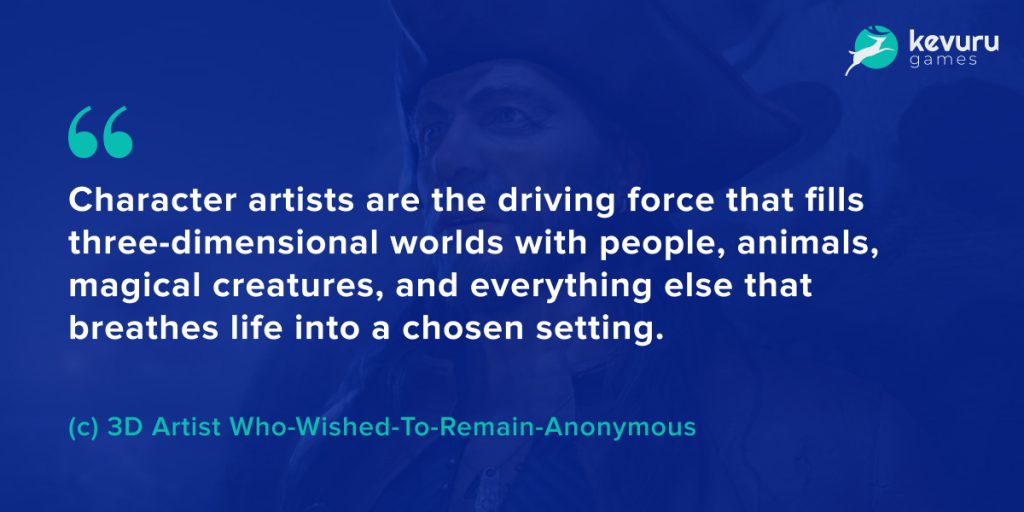
“Character artists are the driving force that fills three-dimensional worlds with people, animals, magical creatures, and everything else that breathes life into a chosen setting.
(c) 3D Artist Who-Whished-To-Remain-Anonymous
And it’s hard to be more precise.
The character artists are like a station where all the pre-production paths converge and the concept art is transformed into a real and concrete 3D model. Next, the baton is taken by the animators. However, this is only a rough sketch, an outline of the true functionality of character artists, giving an approximate idea of their functions in game development.
What is remarkable in this work is that it requires a combination of seemingly incompatible qualities. Technical accuracy goes hand in hand with artistic expression, and fantasy intersects with precise anatomical knowledge. Thanks to these combinations, artists have a unique opportunity to create game characters and creatures, which eventually become the hallmark of the project.
By creating 3D characters, the artists are actually creating the main characters, those with whom the players will associate themselves and with whom they will unite until the end of the game. Not surprisingly, the character artist role is often considered the most coveted in entertainment development.
Let’s try to look behind the scenes of this fascinating art of creating characters – interesting discoveries are surely waiting for us.
How Does 3D Modeling Work?
3D modeling is the process of creating a 3D model – a mathematical representation of any three-dimensional object, real or imaginary, in a three-dimensional software environment.
Unlike 2D images, 3D models can be viewed from any angle, as well as scaled, rotated, and easily modified.
There are two main types of 3D models that are used in the gaming and film industry. The most obvious difference between them is how they are created and how they are manipulated.
| Polygonal Model | NURBS Surface |
| Polygonal models are the most common form of 3D models. They are created by manipulating a polygon mesh. Polygonal meshes are a set of polygons from which the contours of the future object are formed. Polygon modeling is divided into high-poly (detailed model with a large number of polygons) and low-poly (schematic model with a small number of polygons), which makes it optimal for use in games. | Non-uniform rational B-splines are mathematical representations of 3D geometry that can accurately describe any shape from a simple 2D line to the most complex 3D organic surface or freeform solid. Due to the highest level of mathematical precision, flexibility, and accuracy, NURBS surfaces are most often used in modeling in the field of mechanical engineering and automotive industry. |
In continuation of our story, we will talk about polygonal models as the most common form of 3D models.
Strange as it may seem, intricate, highly detailed 3D models that inspire admiration start with primitive shapes such as a sphere or a cube. They are the primary basis for creating a model. The artist manipulates this figure, giving it the desired shape and outlines using special digital tools.
Starting simple and moving towards complexity is the golden rule of 3D modeling. This is how you can create a 3D character.
To understand the principles of polygonal modeling, you need to understand the basic concepts:
- A polygon is a plane in the form of several points in space connected by faces. Polygons can be either triangular (tris – common in game modeling) or quadrilateral (quads – common in character and organic modeling). The more polygons in an object, the more realistic its final look will be.
- An edge is a two-dimensional object or line consisting of two vertices. Accordingly, three edges form a triangle.
- A vertex is the intersection point of three or more edges. Vertex manipulation on the x-, y-, and z-axes is the most common method of shaping a polygonal mesh in traditional modeling software such as 3Ds Max, Maya, etc.
Creating a 3D model requires patience – the artist has to work hard to place the vertices in order to properly contour the model. The polygons that make up the outside of the mesh can be subdivided into smaller pieces to add detail. This is especially important if the model will be animated – smooth movement can be achieved only if all movable places such as knees and elbows have a sufficient number of polygons.
Did you know? To simplify the life of artists and save them from routine tasks, 3D modeling programs include various techniques such as mirroring an already finished part of the model. With its help, the artist can complete the object with only half or even a quarter of it. This is especially true for 3D modeling of characters, as it allows you to create a perfectly symmetrical model, reflecting the work along the desired axis.
3D vs 2D – What Makes a Three-Dimensional Character Different
Of course, no one is going to arrange a battle between 2D and 3D worlds – each of them has the right to exist. However, 3D models have several advantages over their 2D counterparts, especially when creating games, movies, or cartoon characters. Here are the most significant advantages of 3D characters.
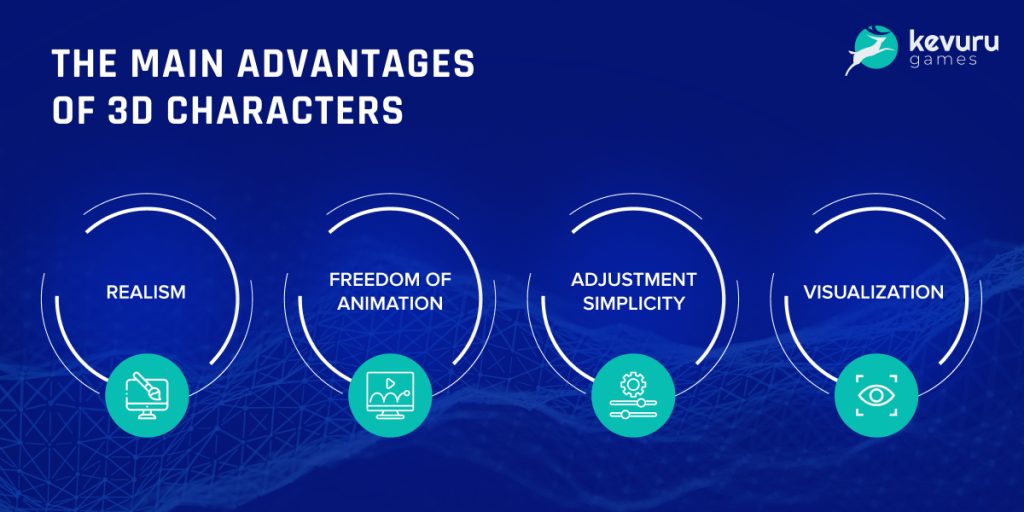
- Realism. 3D models make it possible to achieve any level of detail, from simple sketchiness to photographic accuracy.
- Freedom of animation. 3D characters are easy to manipulate because they are already modeled in 3D and don’t need to be redrawn in different poses to show new movement.
- Adjustment simplicity. The finished model can be easily adjusted and supplemented thanks to the advanced capabilities of modern software and is quickly updated if necessary.
- Visualization. A three-dimensional model of the character looks much more colorful, vibrant, and solid than a two-dimensional drawing, plus it can be viewed from different angles.
How to Draw 3D Characters: Milestones
While the environment is also important to the experience of the game – it sets the atmosphere and feel of the virtual world – it is the characters that remain the main memorable factor.
The visual appeal of the characters, their main features, habits, motivation, and moral principles – during the game, players consciously or not identify themselves with their characters and become whole with them for a while. Therefore, in order for the character to be worthy of being projected onto the player’s personality, the artists put a lot of effort into creating each of them.
How to make 3D models for games? It all starts with an idea, collecting references, and creating concept art.
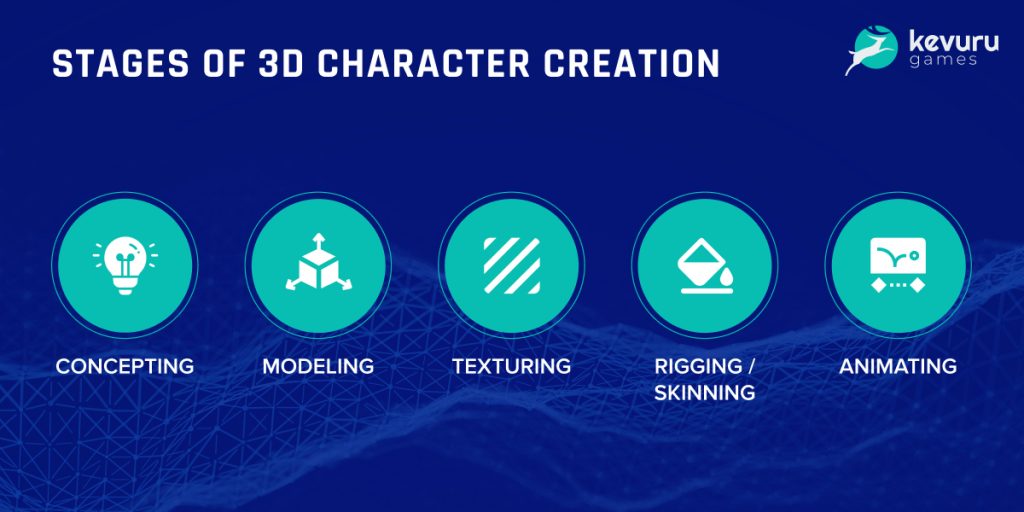
Character Concepting
When the idea is framed in words and the necessary references are collected, concept artists come into play. They are guides from the world of words to the world of visualization – their main task is to give a primary look to future game characters and set the tone for their further development.
In addition to mastering the art of drawing and painting, these specialists are very creative individuals whose knowledge goes far beyond the fine arts. With only a verbal description of the character or a sketch at hand, the concept artist must work it out in more detail. We can talk about the following sequence of actions:
- To begin with, artists make several rough sketches, showing possible options for how the character will look.
- After that, management or the client approves these concepts.
- When an image is chosen, the concept artist must work it out in great detail, taking into account the features of the future character.
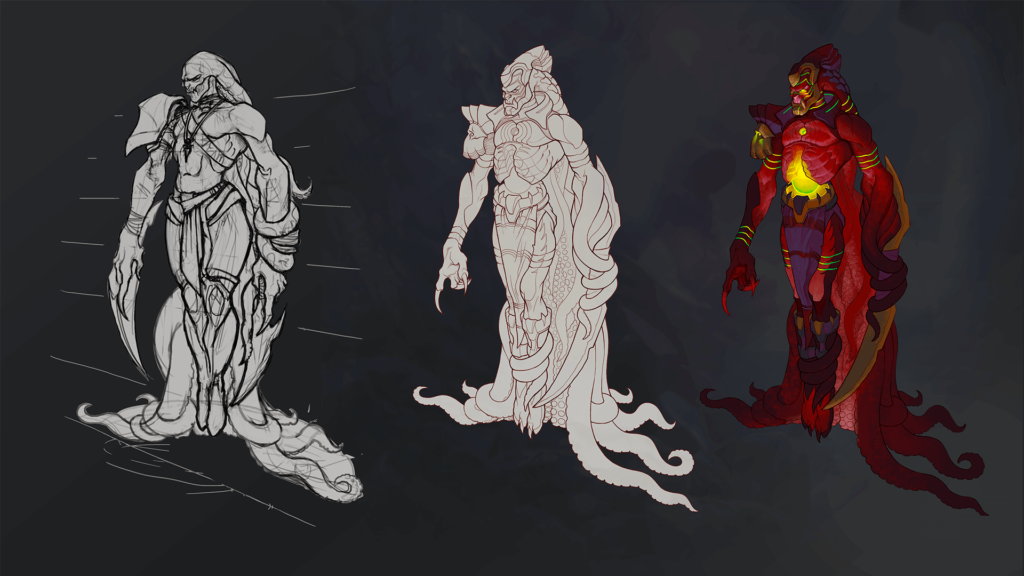
Behind-the-scenes fact. When the concept is ready and approved, artists prepare additional images of the character. They mark different types of body position, various phases of movement, types of facial expressions, main features, posture, costume, weapons, ammunition, key nuances of appearance, color palette, and so on.
Images can be either color or colorless. Most importantly, they should clearly show what kind of character is drawn and what details will need to be worked out when creating a three-dimensional model. To create digital drawings, a huge amount of software, both paid and free, is used. But the leaders are such programs as Adobe Photoshop and Corel Painter.
After collecting and displaying enough information about the character, the concept artists are ready to take their drawings to the next stage.
Character Modeling
Next comes something like digital alchemy. On the basis of concept art, which plays the role of a blueprint, a full-fledged, solid, and alive (from the point of view of game reality) model is created. It is voluminous and almost tangible. Of course, it’s not so easy to imagine a leap from a concept into a three-dimensional space – a 3D modeler must be ready to look for fresh creative solutions and implement a high degree of detail.
This stage begins with a rough formation, followed by more advanced modeling and sculpting, which add more and more details. In general, modeling can be divided into the following stages:
| Blocking | The artist creates the basic shape of the face and body of the character model using primitive geometric shapes and transforming them into the desired character. |
| Sculpting | The artist uses a smooth model as a base and adds detail to it: muscles, folds, skin pores, etc. The result of this stage is a high-poly model with a huge number of polygons. |
| Retopology | The artist reduces the number of polygons to create an optimal topology of the mesh, optimize the model, and prepare it for animation and integration into the game engine. |
| UV mapping | The artist creates a UV map, that is, transfers volumetric forms to the plane and unwraps the model like a candy wrapper that is unfolded and smoothed to prepare it for texture mapping. |
| Baking | The artist transfers details from the high-poly model to the optimized one, thus making the model look identical to the high-poly version, but keeping it easy to animate and use. |
| Texturing | The artist puts a texture on the surface of the model, that is, a bitmap image to give it a color or relief illusion for maximum realism and resemblance to a real object. |
As we have already said, the quality and clarity of 3D characters are affected by the number of polygons – the more of them, the more detailed the model will be.
High-poly models are preferred when creating characters for the film industry. These models are distinguished by smooth curves, strong smoothing, and photorealism. However, their rendering can sometimes take several days.
In games, modellers aim for efficiency and organization by keeping the polygon count as low as possible for the intended shape. Models are still high resolution where more detail is needed, such as a character’s hands or face, and low resolution in low detail areas of the mesh.
When creating a mesh with a character model, a 3D artist takes on several important steps:
- Topology selection. It determines the movement of triangles and vertices along the mesh when it comes to animation. Good work with the topology ensures the correct and undistorted movement of the model.
- The scale of the mesh. A character cannot be taller than a house, unless it is some fantastic creature for whom such dimensions are all in the day’s work. The artist checks the size of the model by comparing it with another finished object of a predetermined size.
- T-shape. An arm-spread character is the best option for further work – it makes setting up the underarm area easier (if it’s a human) and speeds up the rigging process, which we’ll talk about later.
Different projects may require varying degrees of detail, but the main processes and their sequence remain unchanged. Here are some examples of 3D characters made by the Kevuru Games team.
Character Texturing
The creation of textures and their imposition on the 3D model determine its quality, realism, and accuracy. A texture is a bitmap applied to the surface of an unpainted model to give it a color, volume, or illusion of relief.
There are the main types of texturing – relief mapping and MIP mapping.
- Relief mapping is a 3D graphics technology that allows creating the surface of an object in a rich and realistic design. It has its varieties: bump mapping, normal mapping, and parallax occlusion mapping.
- MIP mapping is a texture mapping technique that uses multiple copies of the same texture image but with different levels of detail.
The essence of texturing is to demonstrate each element of the surface, visually represent physical properties, simulate the effects of light and reflection, and also contribute to the most realistic display of the smallest elements: eyes, eyelashes, hair, and skin pores. Some of the most popular texture tools are Substance Painter, Substance Designer, and 3D Coat.
When texturing is finished, the model can also be considered finished. All further steps occur if the model is supposed to be animated.
Character Rigging and Skinning
At the rigging stage, game characters formally acquire a special skeleton, with the help of which they subsequently gain the ability to move. A rig, i.e. a virtual skeleton, defines the main points that integrate the whole body of the character together and gives an understanding of the interaction of its different parts.
In order for a character to move believably, it usually takes between 20 and 100 bones to be created. The more of them, the more difficult it is to provide manual manipulation. Therefore, some tools allow you to scale, move, and rotate a specific group of bones to make the process easier and smoother.
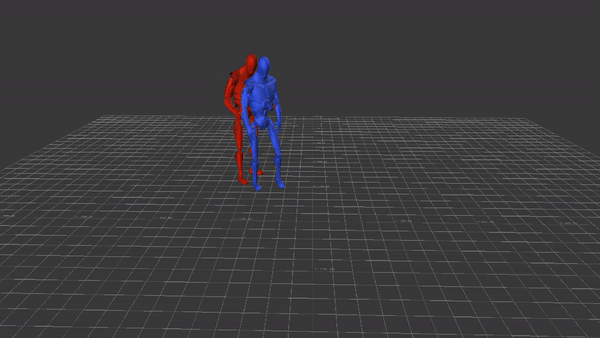
Requiring a precise balance between flexibility, efficiency, and realism, the character rig must match the design of the model. It must also be able to implement ideas simultaneously with the design of the model and meet all performance requirements specified by the animation team.
Next comes skinning – binding the character’s geometric mesh to the created rig. The appearance of the characters when they perform any action depends on its quality. After that, the model is ready for animation.
Character Animation
This is a very big topic, worthy of a separate article and full of nuances. Therefore, we will get by with just a few comments.
In essence, the animation is a quick display of a series of static images that differ in minor details. It goes without saying that the main goal at this stage is to achieve maximum realistic movements of 3D characters. This is where 3D character keyframe animation comes to the rescue. The designer must indicate the position of the 3D character on the first and last frames of the movement, and the calculation of the remaining frames is assigned to a special program. The resulting motions are called interpolation and need an additional clean up.
High-budget projects like Death Stranding use motion capture technology for the most realistic animation possible. People put on a special suit with sensors connected to the model and transmit their movements to it.

Top 3D Character Design Software
3D modeling is endless possibilities. This is the present and the future. This is all that surrounds us. Three-dimensional models, animation, and visualization – this is a generalized, but far from complete, list of features.
Creating 3D characters is a separate category of modeling that requires not only talent and artistic vision, but also knowledge of anatomy, proportions, plasticity, gestures, and facial expressions. The best model is the one that most resembles a real person with the right topology, smooth gestures, and a natural smile.
How to make a 3D character? The range of software for developing 3D characters is truly amazing – from free to very expensive options, from a minimal set of tools for beginners to an advanced interface with a steep learning curve.
Trying to identify the best program would be a rejection of objectivity, since each of them has its own advantages and target audience. Therefore, we will list the most common options that will be great helpers for implementing various ideas for making 3D characters.

3D CHARACTER DESIGN SOFTWARE PRICES
| 3DS MAX | MAYA | ZBRUSH | BLENDER | DAZ STUDIO |
| $225 monthly | $225 monthly | $45,86 monthly | Free | Free |
| $1.785 1 year | $1.785 1 year | $202,4 1 year | Free | Free |
| $5.085 3 year | $5.085 3 year | $850 3 year | Free | Free |
- 3ds Max
Basically, only professionals use 3ds Max from Autodesk. Here you can do almost anything related to 3D modeling and visualization. Not only are characters subject to this software, but also environments and entire worlds. Due to its wide functionality, versatility, compatibility with most plug-ins, and the presence of many ready-made models, 3ds Max is popular all over the world. It’s obviously not suitable for a novice, but experts will be able to enjoy creating 3D designs from scratch to the fullest. The program is not cheap, but it’s worth the price. - Maya
Another software from Autodesk is more focused not on the direct creation of 3D characters, but on working with their animations for further integration into the game. Here, the artist can concentrate on the smallest and finest details, such as the movement of hair and clothes, adding a maximum of realism to the character. The rendering possibilities and the different environments that can be created with this program are truly jaw-dropping. A large set of tools does not limit the artist’s imagination in working on models and drawings. - ZBrush
Pixologic ZBrush is another great software for professionals with a wide range of advanced tools. It equips the modeler with a brush that draws strokes with depth. Simultaneously with sculpting, the artist can also paint the object. An important advantage of the program is the automatic addition of shadows and highlights that look natural without the additional efforts of the modeler. The rendering process usually takes place in real time and the artist immediately sees the result of the work. - Blender
It is a low-investment software and one of the most popular options for newbies. A free, open-source program for everyone, Blender is often used even for commercial projects, so creating 3D objects with it is a common thing. Despite the fact that some consider its interface rather confusing, many beginners start their journey into the world of modeling with this software. It is important to note that due to this, there are a lot of tutorials, instructions, and guides on 3D design and animation in Blender, so no one will be left alone with their problem if it arises. - Daz Studio
This is another free 3D graphics and animation software. Today, Daz Studio is widely used in the modern gaming industry to create simple 3D character designs. A huge advantage of the program is that it has a large database of relevant additions in the form of different textures, certain 3D objects, working plug-ins and extensions. The application runs on the Nvidia Iray engine and is perfect for quickly creating professional animation models of the highest quality. Daz Studio attracts its users with a convenient and quite logical interface, a wide base of 3D content to get the job done, as well as a large number of tutorials.
Where to Find the Best 3D Characters?
Of course, the best 3D characters for games are created from scratch. They will best reflect your idea and will not get lost in a bunch of the same type due to the large number of authentic features.
But if we are talking about a limited budget and, possibly, some rough project, which is not yet planned for production, then it is quite possible to use the base of ready-made 3D modeling for video game. Their cost will be much lower than creating a model from scratch, and some of them can be obtained even for free. Regardless of the purpose for which you choose a model, you will definitely be able to find something in the libraries below.
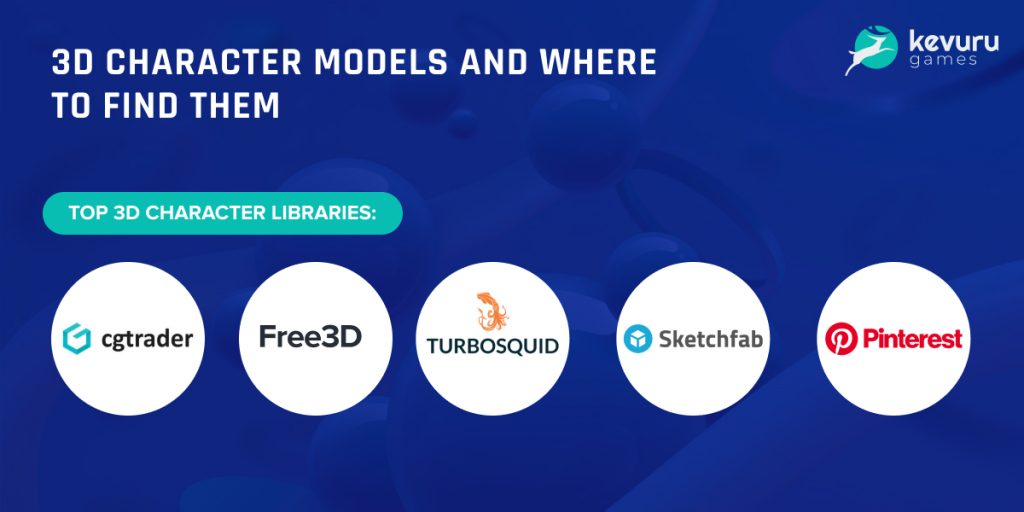
- CGTrader
Freelance artists know and appreciate this platform well. It has a large library of high-poly and low-poly models, some of which are already rigged and ready for action. In addition, here one can post vacancies and search for a job. Prices for models are very democratic, there are also free options. Convenient filters allow you to quickly cut corners and significantly narrow down your search. - Free3D
The name of this platform is fully justified – here you will find a huge number of free models of really good quality. Created by a group of freelance artists and supported by users, the base is constantly updated, providing a huge space for choice. There are models for commercial use, and the prices are more than reasonable. But they are placed in a separate category, and the main trump card of the platform is free options. - TurboSquid
TurboSquid is a resource that is hard to miss. Easy navigation, a user-friendly search system, and a large number of rigged and animated models make it indispensable for anyone who does not have enough time or the ability to build a 3D character from scratch. As in other places, there are paid and free options, the quality of which is on top. - Sketchfab
A feature of this marketplace is support for the WebVR and WebGL protocols, which allow examining the model from different sides in a three-dimensional environment, turning textures on and off, and even exploring wireframes. Interestingly, many models are suitable for 3D printing. Both animated and static models are at your disposal. - Pinterest
Whether you are surprised or not, the fact remains – Pinterest is not only a social network with an emphasis on visual content but also a kind of message board where 3D artists can leave a link to their website or models, which can be downloaded either for free or sometimes for a small fee. Keyword search is very fast and convenient, and a special visual-oriented interface is aesthetically pleasing.
How to Hire 3D Character Artists?
If libraries of ready-made characters are not your choice, then you should think about choosing an artist who can implement your 3D character project. There are several options to get their expertise.
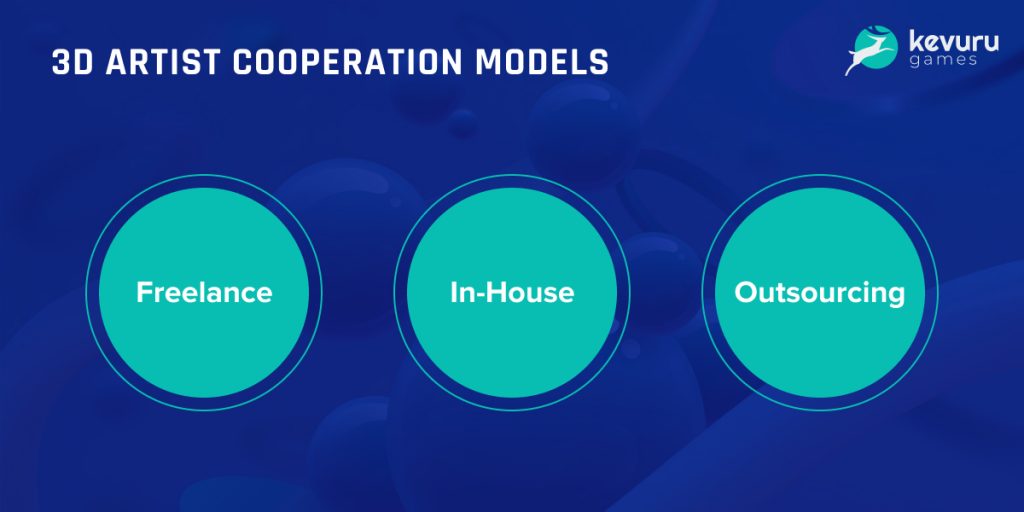
Freelance Portals
The opportunities to work with people who prefer per-project pay are huge right now – the Upwork, Fiverr and Freelancer platforms are at your service. Here you can select specialists according to different criteria, for example, work experience or hourly rate. Freelancers usually charge from $25 per hour and more, depending on skills and abilities.
In-House Employees
There is essentially only one advantage of in-house staff – you see all your employees and can communicate with them live. Although in the light of the total transition to remote mode, this advantage has significantly lost weight. Some find it easier to work in the office – remote work requires discipline and organization, and the office automatically stimulates this and helps people get in the mood for work. But that’s where the positives end.
It is necessary to take into account a significant increase in the cost of renting premises, purchasing equipment and software for each employee, equipping workplaces, providing the office with food and drinks, and so on. At the same time, salaries for character artists start at $50 per hour according to Indeed for the United States.
Outsourcing Studios
Transferring individual tasks or even entire projects to an outsourcing company is a very popular trend. This is not surprising – the team has already been assembled and can immediately start working. This method of collaboration is used by the world’s leading video game development companies. For example, Epic Games, EA, and Lucasfilm have already appreciated the benefits of working with Kevuru Games in various areas of gaming art.
Prices for services of outsourcing studios vary depending on the region of their location. In the US and UK, prices are the highest – from $50 per hour, in Germany – from $35 per hour. The most attractive price-quality ratio can be found in Eastern Europe, for example, in Ukraine – here rates for 3D artists start at $25 per hour, while the quality of work is in no way inferior to the more expensive services of American studios.
We’ve already talked about specific pricing for cartoon and realistic 3D characters: check the article on character design pricing if you are interested in specific numbers.
What Type of Character Design Collaboration is Better?
Now let’s summarize all of the above information.

| FEATURE | FREELANCE | IN-HOUSE | OUTSOURCED |
| Communication | remote | face to face/remote | remote |
| Salary | remote | face-to-face | remote |
| Location restrictions | x | + | x |
| Additional expenses | x | + | x |
| Quality assurance | x | + | + |
| Need for training | x | + | x |
| Flexible team formation | x | + | + |
| Pay-per-project | + | X | + |
Based on this, we can conclude that the most reliable and effective way to hire a 3D character specialist is an outsourcing studio. These companies have well-established work processes and high-quality standards and always strive to exceed customer expectations to ensure a good reputation and credibility in the gaming market.

How Much Does It Cost to Create a 3D Game Character?
The issue of price always worries the minds, especially when it comes to such complex and painstaking work as making 3D characters. There is nothing new under the sun, and we will not reinvent the wheel and beat about the bush.
The price is affected by all the same factors as before: the level of complexity and detail of the character, the need to prepare for animation, the number of alternative options (the character can change throughout the game). Timing also plays an important role – if a customer needs a model in a shorter time, the cost of creating it will increase. We discussed each factor in more detail in our material on calculating the cost of a 3D character model.
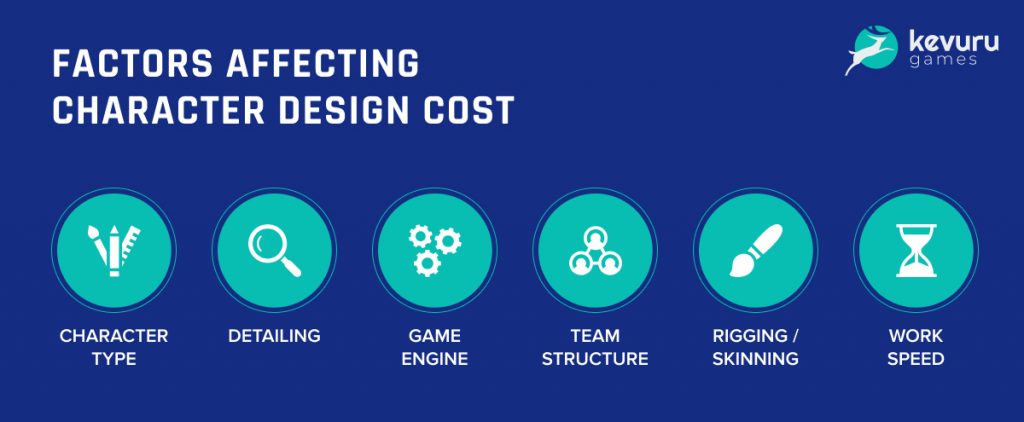
To get around, let’s look at an abstract average character model along with animation:
- The concept creation stage takes up to 20 hours.
- Modeling takes an average of 50 hours.
- Texturing will take about 15 hours, as well as rigging.
- And it takes an average of 5 hours to create 1 second of animation.
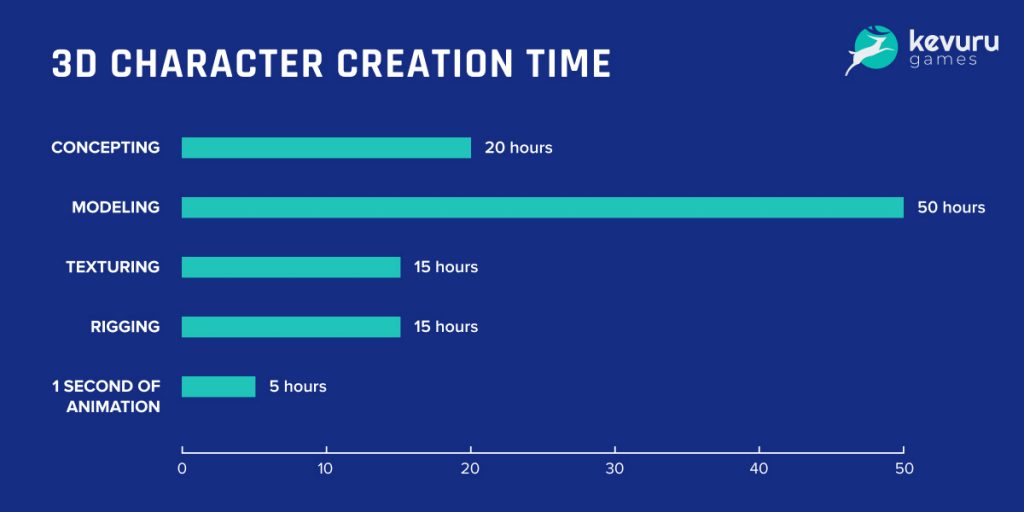
In total, we have a character model created in about 100 hours. On average, one can talk about the cost of $3000, but again, this is an approximate price for an abstract model. When it comes to a real project, any 3D character modeling agency will offer you a free quote with specific estimations.
Wrapping Up
Having glanced out of the corner of the eye into the portfolio of 3D character art, we see what a colossal work is being done so that a bright, lively, and memorable character or creature comes to life. But the game is worth the candle – the more enthusiasm and inspiration invested in the characters, the more likely they are to become iconic in the history of game development.







